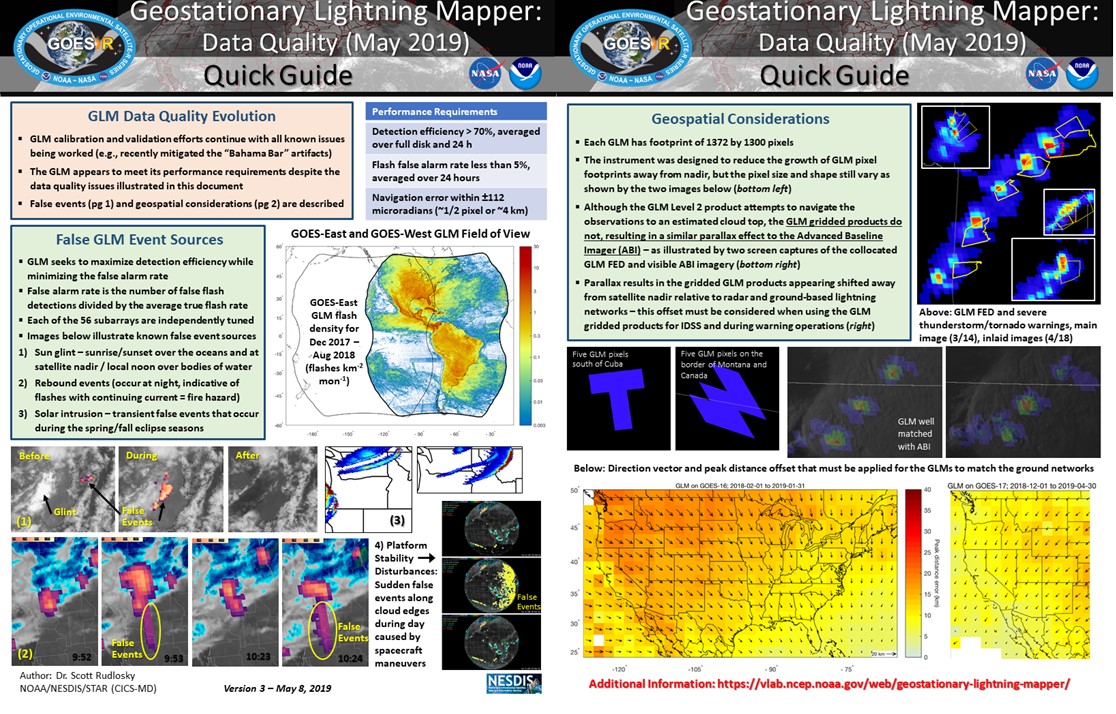SATELLITE-BASED LIGHTNING DETECTION (GLM) - OSTI R2O
Satellite-Based Lightning Detection (GLM)
The GOES Lightning Mapper (GLM) first went up on GOES-R (now GOES-16) satellite in late 2016. GOES-17, GOES-18 and GOES-19 (all with their own GLM devices), were launched in March 2018, March 2022 and June 2024, respectively. Unlike the ground-based systems, which use magnetic direction finding or time of arrival techniques for finding lightning, the GLM uses optical imaging (with spectral, temporal and spatial thresholds centered around wavelength of oxygen) to detect lightning from overhead; this technology was developed over the years and tested on overflights and the Space Shuttle as well as some polar orbiters such as TRMM and LIS. The detection resolution is 10 km and forecasters can see lightning data for most of the western hemisphere. The data has to be used with ground-based systems as the GLM does not distinguish between CG and IC flashes.
More information on the GLM can be found at https://lightning.umd.edu/glm/.
The GLM Science Team meets annually in Huntsville AL in September.


